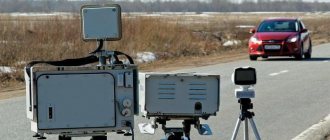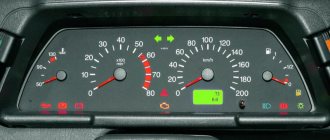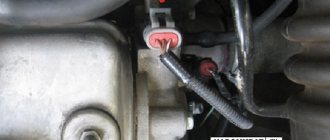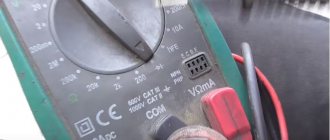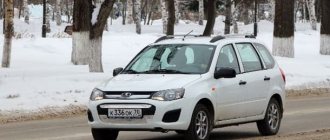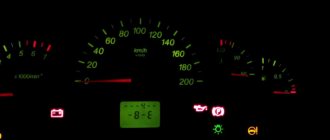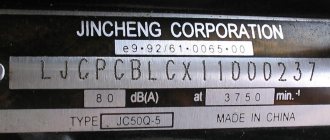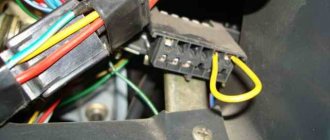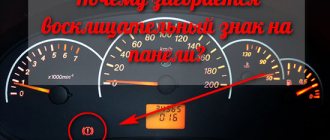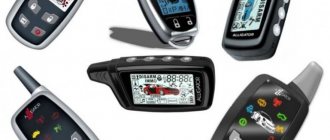What does K-band mean?
This range is one of the most modern. Operates with a frequency of 24150 MHz, which allows radars and cameras to be detected in advance.
It is the extended range of action and accelerated fixation of tracking devices that distinguishes K-band models from all others. In addition, the use of this format made it possible to significantly reduce the size of the device. If previously it was necessary to allocate quite a lot of space for the radar detector, now it can be easily placed almost anywhere with the help of special mounts.
Another advantage of the range can be considered increased bandwidth , which made it possible to reduce the influence of interference and significantly increase the speed of signal decoding.
on the K-band , so drivers can easily detect them in advance and avoid fines.
Additional modes and functions
Laser range. The first time devices working with lasers began to be used to calculate speed was back in the 90s of the last century. The operating principle of the radar detector is very simple: several short signals are sent at equal intervals. After performing digital calculations, the device produces an average number. This principle essentially remains the same, but the distance and frequency of the signals have just changed. Currently, pulse lengths range from 800 nm to 1100 nm. All modern radar detectors are equipped with special sensors that detect laser pulses. The only “BUT” is that the device with the laser range can only work in dry weather.
VG2 or Specter mode. These modes are used in those regions where the use of radar detectors is prohibited by law. These are mainly European countries and some states in America. The bottom line is that the direction finder has an ultra-sensitive receiver, which picks up the signals from the radar detector. At the same time, with a high degree of probability, it indicates the location of the prohibited device. That is why the latest versions of good radar detectors have a built-in function to automatically turn off their local oscillator if a radar appears in its “field of view”, which operates in the VG2 range.
Important! In Russia, Belarus and Ukraine, some special equipment for receiving and transmitting communications operates in VG2 mode. Therefore, it is better to turn off this function when you are in these countries, so as not to cause false signals.
POP mode. There are radars that use only one pulse to measure speed. Its duration can be up to 1/15 of a second. That is, such radars measure speed very quickly - 1 second is enough. Typically, this mode is used in the Iskra type radar. If the radar detector is not equipped with POP mode, then it simply cannot identify it. The POP regime is an international standard that is followed by all world leaders.
Ultra-X and Ultra-K modes. These are modes presented by creators from China and Korea. In essence, this is the same POP, only “cut down” and without certification. The modes do not work correctly with pulses of the X and K ranges.
Hyper-X and Hyper-K modes. These are the newest closed complexes of the system. The essence of the work is a double heuristic analysis of received signals. The complexes have very high accuracy in detecting signals of any duration in modes such as X, K and NEW K (extended range).
SWS function. To use radar detectors in Russia, this function is not needed. At its core, SWS is a system that warns of danger. That is, when approaching an emergency area, the radar detector gives a warning signal.
Anti-sleep function. This option is designed specifically to check the driver's reaction after a certain period of time. The operating algorithm is as follows: the car radar emits a sound signal, and if the driver does not turn it off within the shortest period of time, the device begins to “sound the alarm.”
Ka-band on radar detector: what is it?
Another popular range is Ka-band . It is even more promising than the one discussed above, since it operates at a carrier frequency of 34700 MHz . The capabilities of this device are enough to detect a radar 1.5 km away , which will allow you to prepare in time to overcome a dangerous area. 1400 MHz bandwidth almost completely eliminates all kinds of interference.
In Russia and the CIS countries, this range is just beginning to gain popularity and cannot be compared with the main K-band.
Operating principle and installation location
The operating principle of the device is as follows: to measure speed, the traffic police radar receives a signal that is reflected from a moving car. The radar detector works “directly”, without reflection. Under ideal conditions (good terrain and weather), the radar detector can “see” at a distance of up to 5 km (but the traffic police radar is only 400 m).
Typically, a car radar is mounted on the windshield of a car using a small bracket. An important point here: you need to find a place where there are no heating or tinting strips, since this all affects signal reception. Power comes from the cigarette lighter or built-in battery.
Update and firmware
Sooner or later the question arises of how to update the radar detector. It is important to understand that this should only be done according to the operating instructions. The book will contain manufacturers' advice on this task, and should also describe the firmware version and instructions for reprogramming.
Important! Each manufacturer uses its own databases and updates. Therefore, the reprogramming process may differ depending on the device model. How to update a radar detector?
Algorithm for self-reprogramming:
- First of all, we remove the device and connect it to the computer using a cable (usually it comes included).
- Next, you should launch special software. It is important to choose exactly the one that matches the device model. It is necessary to familiarize yourself with the terms of use and consumer reviews in advance. Usually the update database and firmware versions are available on the manufacturer's website. But they can also be found on other sites.
- When everything is ready, the program will start. If all previous recommendations have been taken into account, the utility will begin automatic updating. After successful completion of the software, the device will again be available for full use.
Radar detectors Neoline
As a preface, it is necessary to say about such a “shock” as the use of a Strelka-type radar, which distinguished itself by measuring the speeds of all cars that fell within its coverage area. Panoramic view of video cameras and illumination up to 200 m are other advantages of this kit.
For a long time, radar detector developers did not know how to bypass Strelka. Devices with built-in GPS function came to the rescue, sending a signal when approaching the camera. But even such a device “caught” too much interference.
As a result, the Neoline company presented its invention - a radar detector that can detect Strelka at a distance of up to 800 m in urban conditions. Neoline radar detectors also operate in standard ranges - X, K, Ka, La (laser range). Some Neoline models have built-in GPS modules.
The company's developers are actively working to improve the operating algorithms of their devices and modernize the appearance of the gadgets.
RADAR4
Is a radarless complex (such as Avtodoriya, etc.) a step forward compared to conventional microwave technology?
In technology there are almost no steps forward - mostly in a spiral. A hundred years ago, two hoses with water were placed across the road at a distance of several tens of meters, and a policeman with a stopwatch measured the time interval between the “fountains” when a car passed through the hoses. The next version implied two cameras at a distance of 1 km and a bunch of operators who determined the numbers of the “racers” by eye. And these days, “Avtodoria” has appeared: video cameras record the vehicle as it enters and exits the measured section of the road. Having calculated the travel time, the system displays the speed at which the car covered this distance. The system itself is not new: similar systems have been used for many years in a number of European countries. It can be used on highway sections from 500 m to 10 km.
Do license plates “sealed” with a special film save you from photo/video recording complexes? Smartphones do not see anything in these cases...
Detailed materials on this topic can be found here and here.
Let us briefly note that serious measuring systems use so-called machine vision cameras, and not household “telephone” toys. They record even the minimal difference between the background and the taped-on number. And recent developments make it possible to cope with more complex tasks, such as reading completely contaminated license plates. However, we will not disclose the technical features of such devices, so as not to provoke another “arms race” between guardians of the law and its violators.
Almost all police forces in the world (including traffic police) use radar to measure speed, enforce speed limits and replenish the treasury. Since the development of these devices, radar detectors have been relentlessly following them. Unfortunately, the police have two aces - they can choose the time and place for theirs (and increase their stopping power by choosing places, dangerous or not, where most normal people drive fast) and outlaw the most effective countermeasures, such as jamming and use of radar detectors.
The radar sends out a pulsed or continuous radio frequency signal and listens for the reflection of that signal. When a pulse reaches a moving object, its frequency changes in accordance with the speed and direction of movement (Doppler effect). New systems have also emerged that use laser radiation to determine speed.
There are three main frequency bands in which police radars operate, commonly referred to as X-band (11 GHz), K-band (24 GHz) and Ka-band (32-36 GHz). All radar detectors listen to these frequencies and beep, chirp and blink when they detect a signal. Increasing the sensitivity of the radar detector allows it to be detected by the radar earlier. Unfortunately, these frequencies are also used by various useful devices, such as automatic garage door openers, security systems, and are also present in the emissions of power lines. Hence the second side of the problem grows - anti-radars, which catch everything and more often lie than warn.
Countermeasures
Radar jamming
Since the standoff, electronic countermeasures have become quite popular. If we skip the discussion on the legality of using such devices and move on to the technical side of the issue, what does interference give? There are two types of noisemakers (jammers) - active and passive. Passive ones receive the radar signal, make it noisy and transmit it back _without_amplification_. The main problem with this method is visible if you compare the antenna area of the device (about 1 square inch) with the frontal area of the car. Any signal from the noisemaker will be overwhelmed by the signal from the rest of the car and safely filtered out by the radar noise reduction system. Studies of such devices have shown their very low efficiency (see original text, there are links there).
Much more effective (and therefore more illegal) are active noisemakers. In this case, the device sends a powerful signal that suppresses the signal reflected by the car. As an example - VCDD Stealth, price about 700 USD (in New Zealand). It consists of a low-quality broadband radiation detector, the signal from which turns on the emitter at the same frequency. According to Car & Drivers and NZ Autonews magazines, there are several serious problems with using this device:
Hide and Seek (Stealth)
The best way to hide from radar is to cover your car with the material used on the famous stealth planes, but there are some difficulties with its availability on sale. Therefore, to begin with, you should pay attention to the front profile of the car. Obviously, a car with a low profile, rear engine and covered up headlights (Mazda RX7) reflects the signal in the opposite direction much worse than a minivan or trailer. In general, a car with low drag theoretically reflects the signal anywhere, just not in the opposite direction, but taking into account the use of plastics, etc. in modern cars. the profile for reflecting the radar signal is further reduced. However, there is no information about any formal studies on this topic.
Lidar jamming
Unlike radar, laser radiation is light, and in this sense its suppression is easier and more legal. Car & Driver magazine (April 1994) published a good article, which, in particular, said that using a pair of powerful fog lights can reduce the range of the lidar speedometer by half, which, if there is a detector, gives a few extra seconds. Robert Weverka and Craig Peterson in their article (Autotronics, March 1995, p. 36) claim that this does not work, but do not explain why C&D received positive results.
Lidar stealth
Lidar works on the principle of reflecting a light (laser) beam off a target surface, so the best way to hide from it is to have a low profile car, black, no chrome parts, and covered in dirt. It's also a good idea to have covers (covers?) on large shiny surfaces to suppress reflections. There were no tests on this topic.
Detectors
Radar detectors are essentially a radio receiver that blinks, beeps or chirps when it receives a signal from the frequency on which the radar operates. Apart from different bulbs, the main difference between the detectors is sensitivity and suppression of random activations. In most cases, these are mutually exclusive parameters.
RADAR6
Why were laser radars needed? Don't the “ordinary” ones cope?
The laser beam allows you to “capture” a specific car in a flow of any density, while the Doppler beam works with a wider signal beam and therefore must determine a faster target in order to clearly identify the intruder.
How do Strelki work? Why did the radar detectors sold for a long time not take them?
The Strelka system analyzes both radar and video data. The radar determines the range and speed, and the computer uses the video image to determine the lane along which the intruder is traveling. All this happens at a distance of a couple of hundred meters. When the violator approaches the camera, he is photographed at close range to record the license plate number, although the fact of the violation was established 200 meters away. The system measures at one moment in time and far away, and photographs at another moment and close. Moreover, the radar is not Doppler, but pulsed. Based on the delay time of the sent pulse, the distance to the object is determined, and after several measurements, the derivative of the distance with respect to time is calculated and the speed is obtained. In this radar, the pulse duration is about 30 nanoseconds, and the pause between pulses is slightly longer. The average power emitted by it is very small, and therefore widely used radar detectors at one time “did not see” it. However, creating such a device did not pose any technical difficulty, and therefore soon all radar detectors began to detect Strelka without problems.
Radar [edit | edit code]
K-band is widely used in radar. Due to the characteristics of this range (high degree of atmospheric absorption and short wavelength), K-band radars are only capable of operating over short distances, producing ultra-high resolution measurements. A typical application for these radars is air traffic control at airports, where a sequence of very short pulses (a few nanoseconds long) is used to determine the distance to an aircraft [8] [9].
Traffic police radars [edit | edit code]
Modern police road radars operate in the K- and Ka- bands. In K-band, the carrier frequency of such radars is 24.150 GHz and the bandwidth is 100 MHz. The shorter wavelength and higher energy potential (the gain of antennas of the same size is directly proportional to the carrier frequency) allows devices operating in the K-band to be small in size and have a detection range one and a half times greater than the range of radars operating in the X-band. The Russian radars Berkut, Iskra-1 and their modifications, as well as photo and video complexes built with the participation of the location parts of these radars, are based in this frequency range [10] [11].
RADAR5
How does radar measure speed?
It depends on the radar. The vast majority of radars we use operate on the Doppler effect: they emit an electromagnetic signal and catch its reflection from the car. If the car is moving, then the frequencies of the emitted and reflected signals do not match. Based on their difference, the radar calculates the vehicle's speed. But laser radars are actually rangefinders. They measure the distance to an object several times in a row, which changes as it moves, and then calculate the derivative of the distance with respect to time. This is how speed comes about.
Radar detector and anti-radar - what's the difference?
The difference is fundamental, although in everyday life both terms are often used indiscriminately. A radar detector is an active noise generator that disrupts the operation of a measuring instrument; its use is prohibited everywhere. A radar detector is essentially a passive radio receiver tuned to the required frequencies (however, in a number of countries it is also illegal). However, as often happens, the illiterate term “radar detector” is used much more often. We discussed this topic here.
Which radar detectors are better: direct gain or superheterodyne?
We remind you: a direct amplification receiver amplifies the directly received signal, and a superheterodyne operates only with one frequency, obtained from mixing the input signal and its own oscillator - the local oscillator. Perhaps, “supers” are better - they have a combination of high sensitivity and noise immunity in conditions of industrial interference in megacities.
